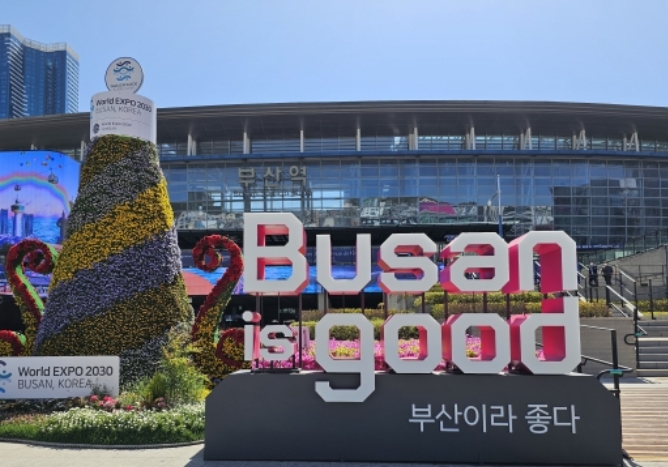Busan 3 day itinerary
Busan is a must-visit destination for travelers visiting Korea for a mid- to long-term trip rather than a short-term trip. Busan is Korea’s second-largest city and a coastal city located 300 kilometers south of Seoul. For comparison, you can think of it as a city with a similar feel and status to Marseille in France!
If you want to know all the ways to get from Seoul to Busan, please refer to this article.
Day 1
Arrival at Busan Station
As you can see from the article I wrote above on how to get from Seoul to Busan, the most recommended way is to take the high-speed train to Busan. So, I will start this trip at Busan Station.
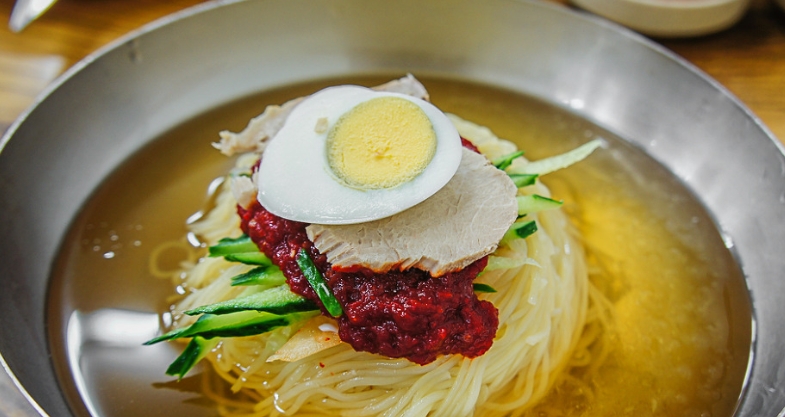
Choryang Milmyeon (초량밀면) in front of the station: Upon arrival, let’s start the trip by eating Busan’s native food in front of Busan Station.
After getting off the train at Busan Station, when you come out, there will be a large plaza. There is also a photo point for tourists, so it would be nice to take a photo there. After taking a picture, walk to the right for about 5 minutes, and you will find the main branch of Choryang Milmyeon.
Milmyeon is a type of cold noodle made with noodles kneaded with flour in a pork broth-based broth. It is similar to naengmyeon but has a different taste and is difficult to find outside of Busan, so it is one of the foods that Koreans must eat when they go to Busan. The reason I recommend this restaurant is because it is very close to the station and is a pretty good restaurant.
Yeongdo (영도)
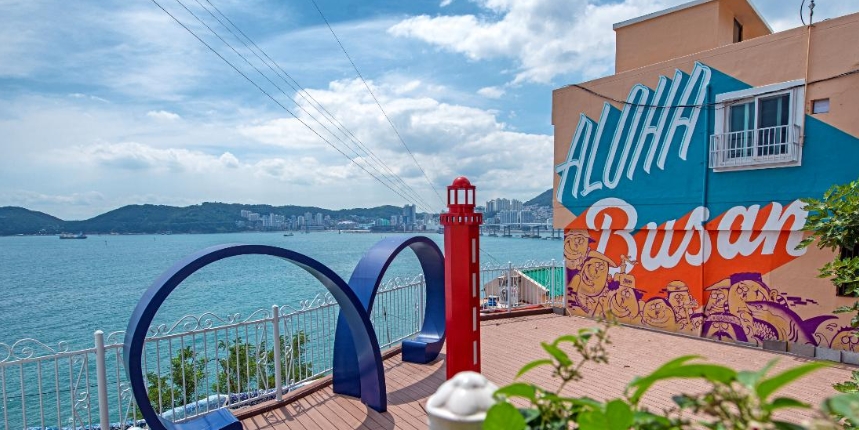
After eating a delicious lunch in front of the station, I recommend taking the bus to Yeongdo at the bus stop in front of the noodle restaurant. Please refer to this article for everything about Yeongdo!
Gwangbokdong Food Street (광복동 맛집 거리)
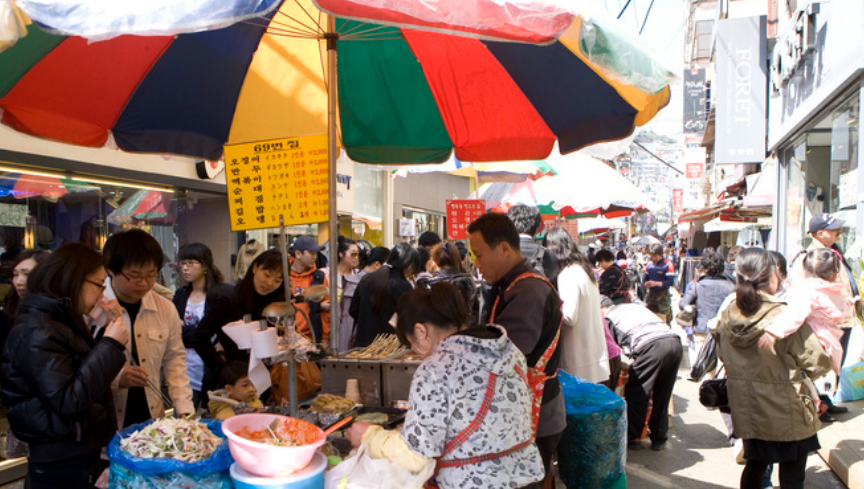
When you look around Yeongdo, a significant amount of time has probably passed since roughly the first day you arrived.
After enjoying Yeongdo, I recommend visiting the Gwangbokdong Food Street right next to Yeongdo. Gwangbokdong Food Street is famous among locals in Busan, but it can be said to be a traditional market with a more local feel, with fewer tourists than Gwangjang Market! After a hard day of sightseeing in Yeongdo and eating delicious food at Gwangbok-dong Market, you can say you had a good day. You can find out about the must-eat foods and restaurants in Gwangbok-dong’s food street by reading this article.
Day 2
Haedong Yonggungsa Temple (해동용궁사) or Beomeosa (범어사)
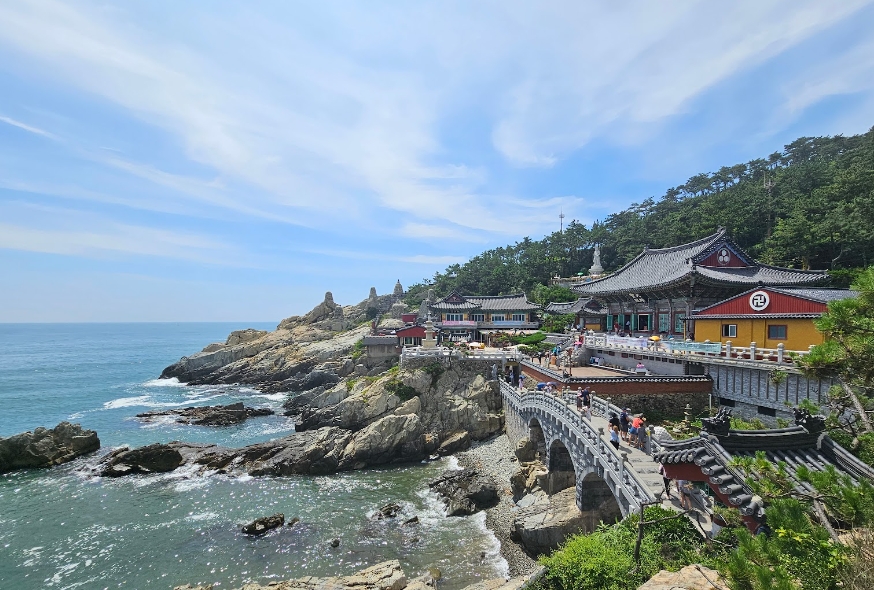
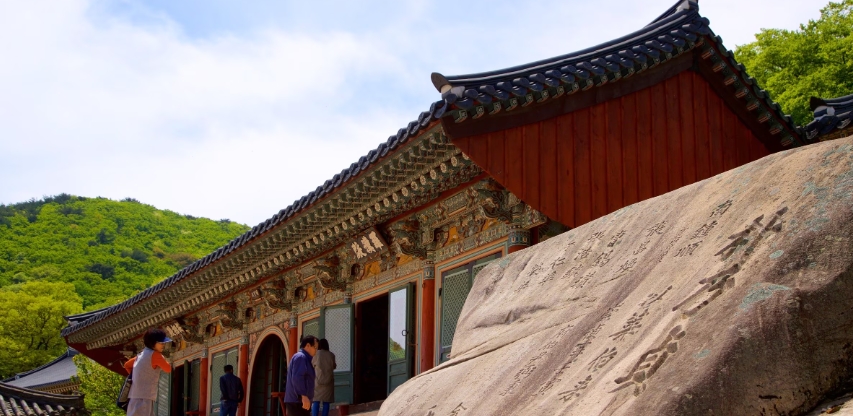
Haeundae Blueline Park (해운대 블루라인 파크)
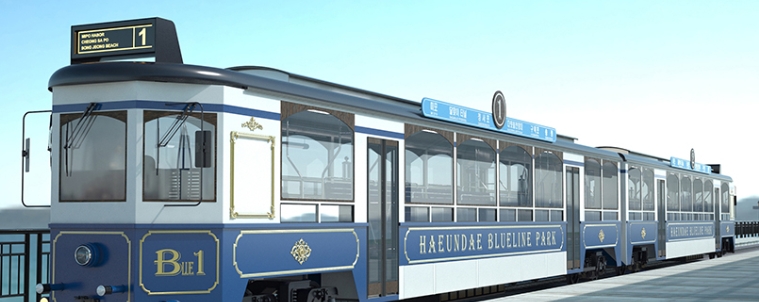
If you went to the temple, you still have to move on to the next tourist destination, right? Next, I recommend taking the Haeundae Blue Line Park and moving from Cheongsapo Station to Mipo Station. Haeundae Blue Line Park is a monorail developed for tourism that runs along Haeundae Beach. The fare is 7,000 won per person (about 5 dollars), which is not cheap.
However, I recommend it, as it is one of the few options where you can see beautiful beaches while enjoying a leisurely train ride. Of course, this is limited to cases where Haeundae Blue Line Park is located near your accommodation or destination. To be honest, it’s not like I would come from far away to ride one of these. The reason I mentioned this is because Mipo Station is next to the famous Haeundae.
Zzang Tteokbokki (짱 떡볶이)
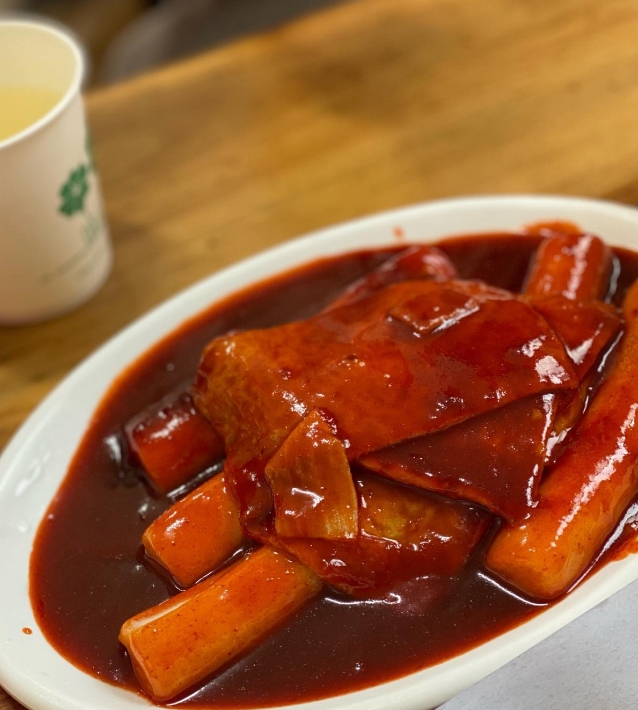
By the time you get here, you must be quite hungry. If you come to Haeundae, you need to eat something to gain strength. The restaurant I recommend is ‘Zzang Tteokbokki’ in Haeundae. This is a famous tteokbokki restaurant that was featured on a famous restaurant program in Korea. It is about a 10-minute walk from the exit of Haeundae Station or Jungdong Station.
This place sells it at a very reasonable price without being overly spicy. Tteokbokki costs 3,500 won (about 3 dollars) per serving, and you can also buy food in 1,000 won (less than 1 dollar)! In addition, tteokbokki’s friends, fried food and sundae, and Busan’s famous odeng are also sold for 700 won (less than 1 dollar) each. It is open every day except Sunday from 10 am to 9 pm, so it is a restaurant worth visiting if you are in Haeundae.
Haeridan-gil (해리단 길)
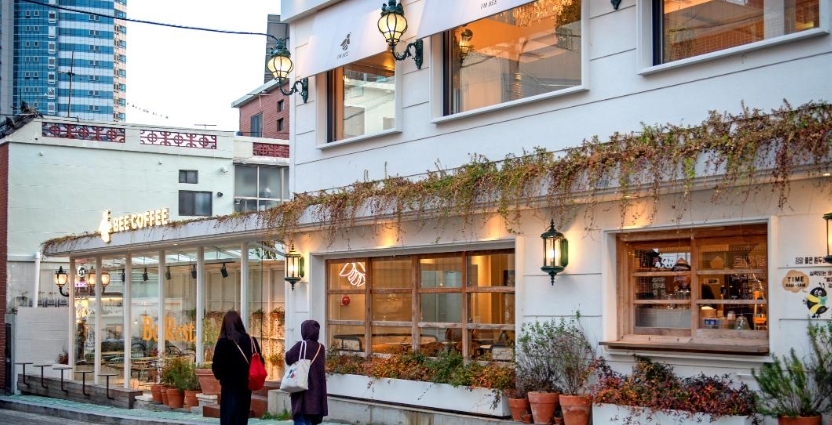
After eating spicy and hot tteokbokki, it’s time to relax at Haeridan-gil. Haeridan-gil begins at Exit 4 of Haeundae Metro Station in Busan, where you cross the train tracks behind the former Haeundae Train Station. Haeridan-gil was influenced by Gyeongnidan-gil in Seoul. Haeundae has established itself as an emerging tourist destination, with numerous distinctive cafes and eateries opening one after the other along the small alleys.
It is a popular destination for both locals and tourists due to the free-spirited street ambiance, which includes funny murals painted on the alley walls. Visitors are drawn to a variety of attractions, including cafes and restaurants with charming exteriors that are ideal for photographing, prop shops selling distinctive items, and flea markets hosted on an irregular basis.
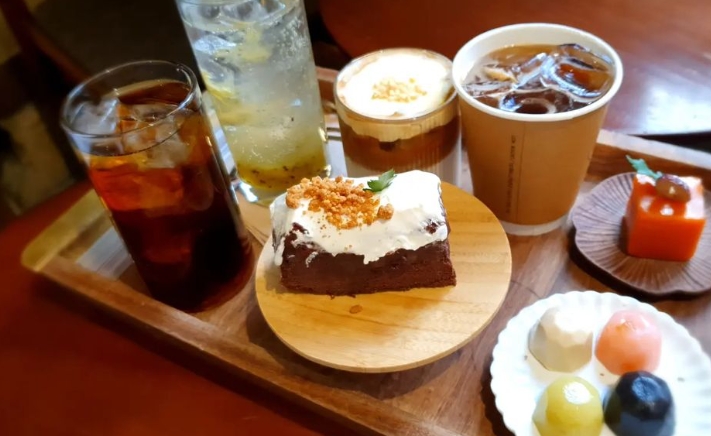
The place I especially recommend is ‘Cafe Hito’ (카페 히토) on Haeridan-gil. Cafe Hito is a famous and beautiful cafe on Haeridan-gil, famous for its interior design, delicious coffee, and traditional Korean desserts. The traditional Korean desserts I recommend are Yanggaeng(양갱) plates and Yakgwa(약과) cookie ice cream. You can think of both as very sweet traditional Korean snacks. You won’t regret it. For your information, operating hours are from 11:40 AM to 9:20 PM every day, and the last order is 8:50 p.m.
Haeundae (해운대) & Mipohang (미포항)
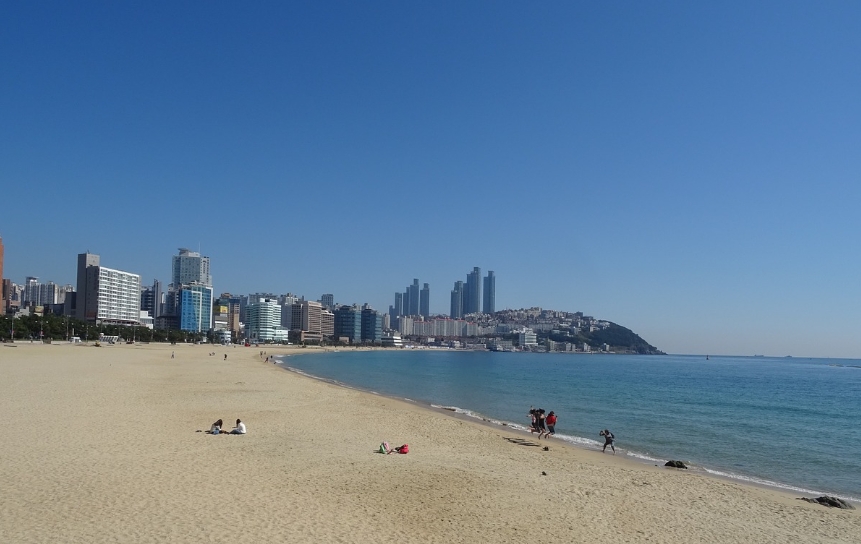
After spending some time in the cafe, it’s time to see the sea. The major street from Haeundae Station leads to Haeundae Beach. Haeundae Beach is Busan’s representative beach. The white sand beach measures 1.5 km long, 30–50 m broad. It offers a broad white sand beach and a gorgeous coastline, as well as ideal beach conditions such as shallow water depth and gentle waves.
Haeundae Beach is supposed to be the first spot that comes to mind when you hear the word ‘Busan’. It is a representative tourist destination in Busan, as well as the site of the largest gathering of people in Korea each year. It is particularly well-known for its modern and sophisticated environment, with large and small buildings and luxury hotels sprouting along the coast, making it popular with young people not only during the summer vacation season but all year.
Haeundae Beach has a moongazing festival every year on the first full moon. Furthermore, the annual Polar Bear Swimming Competition has established itself as a representative winter festival. In addition, a variety of large and local events are held, including the Sand Art Exhibition and the Busan Sea Festival.
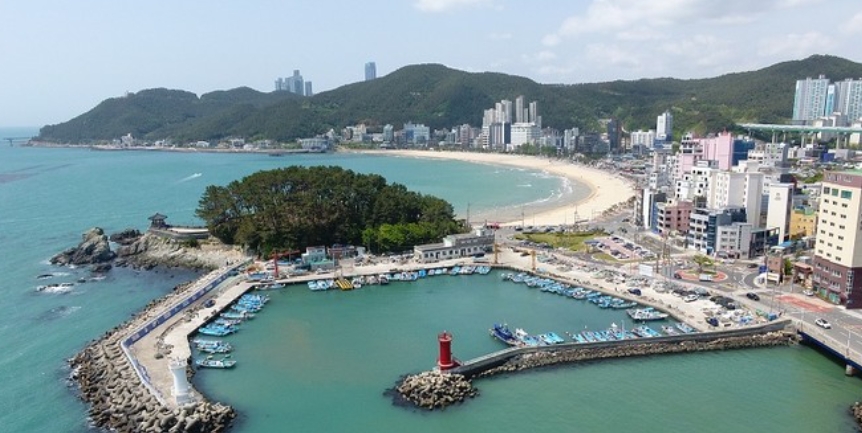
Day 3
Gwangalli Beach (광안리 해수욕장)
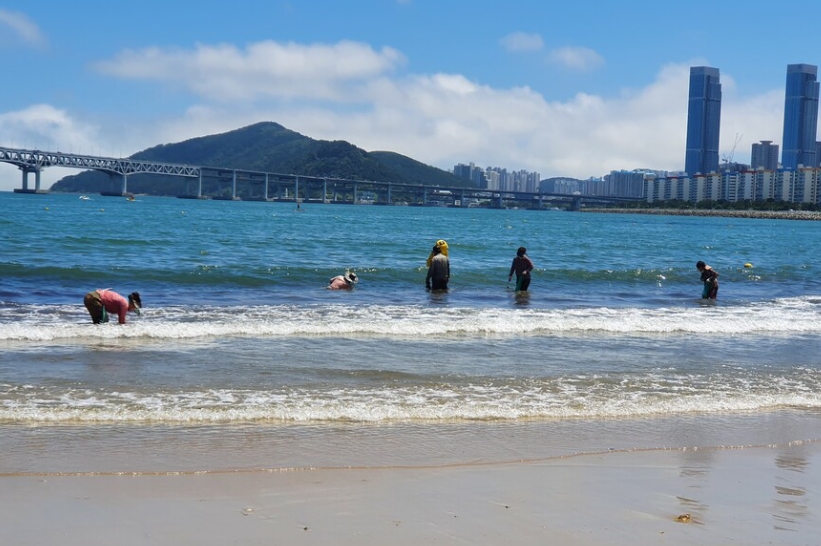
On the final day, I recommend a leisurely walk around Gwangalli Beach. Of course, swimming in the sea would be enjoyable in the summer! Gwangalli Beach, with its crescent-shaped beach and clear ocean, is Busan’s emblematic urban marine park. It has a total area of 82,000㎡ and a 1.4km long, 25–110m sandy beach.
A permanent outdoor stage is erected on the beach, where varied acts take place at all times. A waterfront park, a beach park, a youth training center, and a marine leisure sports facility are all nearby, allowing you to participate in a variety of marine sports such as banana boating and windsurfing. Around the beach, there are not only restaurants with distinct atmospheres but also over 300 raw fish restaurants, raw fish centers, Eonyang Bulgogi, bean sprout hangover soup lanes, and unusual café streets. The café street from Gwangan Bridge is so nicely adorned.
Choryang Ibagu-gil (초량 이바구길)
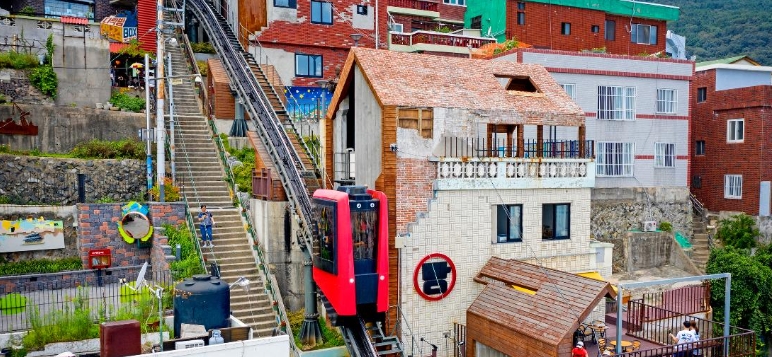
If you have additional time, consider going to Choryang Ibagu Road. Choryang Ibagu-gil in Dong-gu, Busan, is a theme street that showcases Busan’s history and culture. This is a rich mine of stories that capture images of Busan in the 1950s, when the city was a haven for refugees following independence, beginning with the building of Busan Port during the Japanese colonial period, and in the 1980s during the industrial renaissance.
Ibagu Road is 1.5 kilometers long and begins at Namseon Warehouse, Busan’s first logistics warehouse, across from Busan Station. It continues to the old Baekje Hospital building, the Ibagu Gallery installed on the wall of Choryang Elementary School, the well site, 168 stairs, Kim Min-bu Observatory, Dangsan, and Mangyang-ro. Among these, poet Kim Min-bu’s observatory, which wrote the poem ‘Waiting Heart’, is recognized for its gorgeous environment and is the ideal site to observe Busan Port.
Conclusion
This concludes our 3-day travel plan. When returning to Seoul, I recommend going back through Busan Station. If you want to know how to get from Busan to Jeju Island, you can find out everything by reading this article.
As I share my plans for our upcoming trip to Busan, I’m thrilled to invite you to join me on an unforgettable adventure. From exploring the picturesque beaches to indulging in the local cuisine, our itinerary is brimming with excitement and cultural exploration. With careful consideration, I’ve crafted an experience that captures the essence of Busan’s charm and diversity. I can’t wait to embark on this journey together, creating cherished memories and moments that will last a lifetime. Get ready to immerse yourself in the beauty and magic of Busan as we discover all that this vibrant city has to offer.

